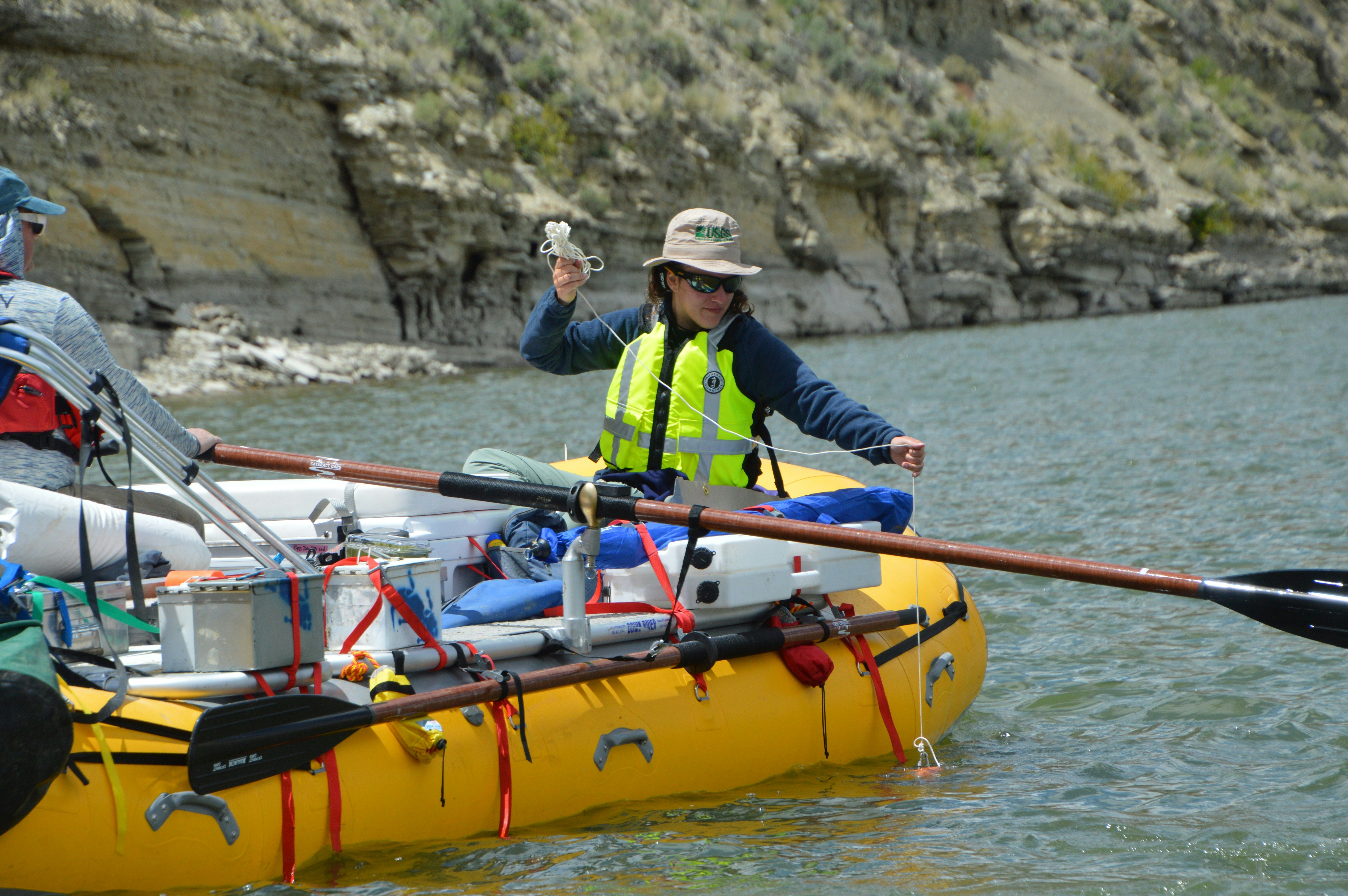Public Service Loan Forgiveness: What It Is, How It Works for 2026
Student debt is an issue prevalent among many Americans. A recent survey revealed that 20% of undergraduate degree holders and 24% of postgraduate degree holders still have unsettled student loans (Hanson, 2024). Notably, in the academic year 2021–2022, 51% of bachelor’s degree graduates from public and private nonprofit 4-year academic institutions had student debt, with an average of $29,400 among borrowers (Ma & Pender, 2023). Luckily, you can apply for loan repayment assistance programs and loan forgiveness programs. For instance, if you are a professional in public service, you may be eligible for Public Service Loan Forgiveness (PSLF).
To help you learn more about PSLF, I, a career-planning expert with over a decade of experience, created this comprehensive guide discussing how the program works, its benefits, application requirements, qualified repayment plans, and common mistakes when applying for PSLF.
Key Things You Should Know About Public Service Loan Forgiveness
- Public Service Loan Forgiveness (PSLF) is a government program designed to reduce the financial burden of student loans for individuals working in public service sectors.
- PSLF applies specifically to any loan under the William D. Ford Federal Direct Loan Program, such as Direct Subsidized Loans, Direct Unsubsidized Loans, Direct PLUS Loans, and Direct Consolidation Loans.
- Many borrowers were denied PSLF in 2017 due to the incorrect loan program or the wrong repayment plan, among other reasons. However, thanks to temporary changes to eligibility requirements, the number of borrowers forgiven drastically increased in 2022.
Table of Contents
- What is Public Service Loan Forgiveness?
- Who qualifies for PSLF?
- What types of loans are eligible for PSLF?
- What are the employment requirements for PSLF?
- What documentation is needed for the PSLF application?
- Which repayment plans qualify for PSLF?
- What is the required number of payments for PSLF?
- How does PSLF compare to alternative funding options?
- Will PSLF Forgiveness Impact My Taxes?
- Can an accelerated AA degree online expedite my journey toward PSLF eligibility?
- What should you do if your PSLF application is denied?
- How can short-term certifications support your PSLF journey?
- Is PSLF a reliable long-term solution for student debt relief?
- What are the common mistakes people make with PSLF?
- What is Temporary Expanded Public Service Loan Forgiveness?
- How do educational institution choices influence my PSLF strategy?
- What is the impact of the Biden administration on PSLF?
- How do career transitions affect my PSLF eligibility?
- How can you prepare for PSLF and other loan options?
- How do current student loan interest rates affect my PSLF strategy?
- How do I track and verify my PSLF progress?
- Other Things You Should Know about Public Service Loan Forgiveness
What is Public Service Loan Forgiveness?
Public Service Loan Forgiveness (PSLF) is a government program designed to reduce the burden of student loans for individuals working in public service sectors. Established by Congress in 2007, PSLF forgives the remaining balance on direct loans after the borrower has made 120 qualifying monthly payments while working full-time for a qualifying employer. Eligible employers include federal, state, local, and tribal government organizations, nonprofit organizations, and other public service employers.
By offering financial relief, PSLF encourages individuals to build public service careers. While researching this guide, I discovered that between October 2021 and March 2024, 871,000 borrowers were forgiven for federal student loans totaling $62.5 billion (US Department of Education, 2024). The PSLF program has been helpful to hundreds of thousands of Americans, considering how many school districts in the US admit students as well as the high cost of a bachelor's degree program in the country today.
Notably, borrowers must ensure the following to benefit from the forgiveness program:
- They are on the correct repayment plan.
- They maintain qualifying employment.
- They submit annual employment certification forms

Who qualifies for PSLF?
The first batch of borrowers became eligible for Public Service Loan Forgiveness (PSLF) in 2017. However, many borrowers were denied because they were in the incorrect loan program or had the wrong repayment plan. Out of 19,321 loan forgiveness applicants, only 55 were granted (US Government Accountability Office, 2018).
Thanks to temporary changes to eligibility requirements, the number of borrowers forgiven drastically increased. In June 2022, nearly 165,000 borrowers were granted loan forgiveness amounting to $10.5 billion. Currently, public service professionals who seek PSLF must meet the following specific criteria:
- Have direct loans or consolidate other federal student loans into a direct consolidation loan
- Employment with a qualifying employer, including government organizations and nonprofit organizations
- Work full-time, defined as meeting the employer's definition or working at least 30 hours per week, whichever is greater
- Be on an income-driven repayment plan, such as income-based repayment (IBR) or Pay As You Earn (PAYE)
- Make 120 qualifying monthly payments, which do not need to be consecutive
- Submit the Employment Certification Form annually or whenever changing employers to ensure that employment and payments qualify

What types of loans are eligible for PSLF?
Public Service Loan Forgiveness (PSLF) applies specifically to any loan under the William D. Ford Federal Direct Loan Program, such as the following:
- Direct Subsidized Loans
- Direct Unsubsidized Loans
- Direct PLUS Loans
- Direct Consolidation Loans
Loans from the Federal Family Education Loan (FFEL) Program and the Federal Perkins Loan Program do not qualify unless consolidated into a direct consolidation loan. Notably, only payments made on the direct consolidation loan count toward the 120 qualifying payments required for PSLF. Moreover, private student loans are ineligible for PSLF.
Borrowers must verify their loan types and consider consolidating non-direct federal loans to qualify. However, consolidating can reset the payment count. Thus, you must weigh the benefits carefully.
What are the employment requirements for PSLF?
Public Service Loan Forgiveness (PSLF) has specific employment requirements to ensure borrowers are genuinely engaged in public service. Notably, during my research for this guide, I found out that throughout the decade between the creation of PSLF in 2007 and its enforcement with its first batch of borrowers in 2017, the number of public service employees increased by 1,376,947. Employment levels in 2007 showed 2,462,127 government employees, rising to 3,839,074 in 2017. By March 2023, employment had grown to 3,899,691 (US Census Bureau, 2007, 2021, 2024).
The following are three key employment requirements:
- Qualifying Employer. Borrowers must work for a public service/government organization at any level—federal, state, local, or tribal—or a tax-exempt organization pursuant to section 501(c)(3) of the US Internal Revenue Code. Certain nonprofits providing public services, such as law enforcement, public health, or education, also qualify.
- Full-time Employment. To meet PSLF criteria, borrowers must work full-time, defined as either the employer's standard for full-time work or a minimum of 30 hours per week, whichever is greater. Multiple part-time or contractual jobs at qualifying employers can be combined to meet this requirement.
- Employment Certification. Borrowers should submit the Employment Certification Form (ECF) annually or when changing jobs to verify their employment qualifies for PSLF. Regular submission of the ECF helps track progress and ensure that all employment periods are counted.
The chart below provides a visualization of full-time employment levels in the US government in 2007, 2017, and 2023, according to data from the US Census Bureau.
What documentation is needed for the PSLF application?
Applying for Public Service Loan Forgiveness (PSLF) requires specific documentation to verify eligibility and track progress. I have found that the following are three main necessary documents:
- Employment Certification Form (ECF). This form, submitted annually or when changing employers, verifies that your employer and employment qualify for PSLF. It ensures that your work history meets the program’s requirements.
- Proof of Employment. This includes pay stubs, W-2 forms, or other official employer documents confirming full-time employment status. Providing consistent proof helps establish a clear record of your qualifying work.
- Payment Records. Detailed records of your loan payments, including dates, amounts, and payment methods, are essential. These records help demonstrate that you have made the required 120 qualifying monthly payments under an income-driven repayment plan.
Submitting these documents accurately is important for a successful PSLF application and helps avoid delays or denials in the loan forgiveness process.
Which repayment plans qualify for PSLF?
Many people ask “On average, how long does it take to pay off student loans?” To answer this, it is important to first learn about the different repayment plans available to them. After all, to be successful in your application for Public Service Loan Forgiveness, you must know the eligible repayment plans.
Explore the following income-driven repayment (IDR) plans, which may enable you to qualify for loan forgiveness after 20 or 25 years of qualifying payments:
- Saving on a Valuable Education (SAVE). Formerly the REPAYE Plan, the SAVE plan allows those who borrowed $12,000 or less to become eligible for loan forgiveness after 10 years of qualifying payments. Those with federal student loans of more than $12,000 get longer repayment terms, with an additional 1 year per additional $1,000 owed (Consumer Financial Protection Bureau, 2024).
- Pay As You Earn (PAYE). Payments are 10% of discretionary income. Notably, individuals who may qualify for PAYE must have borrowed their first federal student loan after October 1, 2007, and direct loans or direct consolidation loans after October 1, 2011.
- Income-based Repayment (IBR). IBR requires you to pay 10%, 15%, or a lower percentage of your discretionary income based on when you took out your student loans.
- Income-contingent Repayment (ICR). Payments are the lesser of 20% of discretionary income or what would be paid on a fixed 12-year repayment plan, adjusted based on income.
- Standard Repayment Plan for Direct Consolidation Loans. Borrowers under the standard repayment plan may be eligible for PSLF only if their maximum repayment term was set at 10 years.
The chart below visualizes the payment terms offered in the different repayment plans for federal student loans. These terms are based on borrowers’ discretionary income. For instance, in the Pay As You Earn (PAYE) repayment plan, payments are 10% of your discretionary income.
What is the required number of payments for PSLF?
Applicants of Public Service Loan Forgiveness (PSLF) are required to make 120 qualifying monthly payments to become eligible. The required payments must be made while working full-time for a qualifying employer.
Notably, the payments do not need to be consecutive, so applicants are allowed to have intervals in employment or changes in repayment plans. After making the 120 qualifying payments, borrowers can apply for forgiveness of the remaining loan balance.

How does PSLF compare to alternative funding options?
Beyond Public Service Loan Forgiveness (PSLF), borrowers should carefully evaluate alternative funding options to finance their education or tackle existing student debt. For instance, private loans can be a viable option for those pursuing specialized fields of study not fully covered by federal aid. Particularly, individuals training in niche industries—such as aviation—might find funding opportunities tailored to their needs, like flight training loans. These financial products cater to aspiring pilots and aviation professionals, offering specific terms and repayment flexibility designed to match the unique demands of their careers.
While private loans can offer supplemental support, it is critical to recognize that they do not provide comparable forgiveness opportunities to those offered under federal programs like PSLF. Borrowers should weigh the long-term implications of repayment terms, interest rates, and potential career paths. Additionally, exploring income-driven repayment plans under federal loan programs might offer a more predictable route to manage debt for public service professionals.
Consulting with financial advisors and leveraging tools such as the PSLF Help Tool can help borrowers strategically align their loan choices with their career aspirations. Whether relying on PSLF, private financing, or a combination of both, careful planning is essential to minimize financial stress and achieve long-term financial goals.
Will PSLF Forgiveness Impact My Taxes?
Under current guidelines, the forgiveness provided through PSLF is not considered taxable income. This tax benefit differentiates PSLF from other forgiveness programs where cancelled debt may result in a tax liability. It is important to stay informed about any potential changes from the IRS or legislative updates that could affect this status. Borrowers should also consult with a tax professional to ensure their individual circumstances are fully accounted for. For insight into competitive private alternatives, consider SoFi student loans.
Can an accelerated AA degree online expedite my journey toward PSLF eligibility?
Completing an accelerated AA degree online can shorten the time needed to enter the workforce in qualifying public service roles, thereby starting your PSLF clock sooner. If you consider this pathway, carefully assess the program’s accreditation, federal aid eligibility, and alignment with your long-term career objectives. For instance, accelerated AA degree online programs may offer a faster route to gaining the credentials required for public service positions, but it is essential to verify that the curriculum meets industry standards and supports sustainable career growth.
f
If your PSLF application is denied, promptly review the specific reasons provided and verify that your payment history, employment documentation, and loan types are accurately reported. Consult directly with your loan servicer to request a detailed explanation and pursue any available appeal process. It is advisable to document all communications and maintain organized records for subsequent reviews. Additionally, consider seeking professional guidance from a nonprofit student loan counselor or a financial advisor to explore corrective measures or alternative repayment options. For guidance on potential academic paths that might enhance your career credentials in public service, research affordable graduate certificate programs to support your future applications.
How can short-term certifications support your PSLF journey?
Specialized skill enhancements can bolster your professional profile and help secure positions in qualifying public service roles. Leveraging focused credentials—such as those offered through 6-month certificate programs—can facilitate career advancement while reinforcing your commitment to public service. This targeted approach not only improves marketability within federal employment sectors but also supports the consistency and documentation required to sustain PSLF eligibility.
Is PSLF a reliable long-term solution for student debt relief?
Borrowers should consider that the sustainability of PSLF is influenced by evolving legislative and administrative policies. Evaluating long-term financial planning becomes crucial as changes in government priorities may alter eligibility criteria or program benefits over time. Regularly reviewing official guidelines and consulting with financial professionals is recommended to mitigate unforeseen risks. Additionally, advice on furthering your education with programs such as affordable master's degrees online can support comprehensive career and repayment strategies.
What are the common mistakes people make with PSLF?
Considering the intricacies of applying for private student loans and public student loans, individuals must understand common mistakes when pursuing Public Service Loan Forgiveness (PSLF). These may have hindered their progress or resulted in their application's rejection. To help your chances of being granted federal loan forgiveness, explore the following three mistakes to avoid:
- Not Submitting the ECF Regularly. Failing to submit the ECF annually or when changing jobs can lead to delays in verifying qualifying employment. Regular submission helps track employment status and ensures that all periods of eligible work are counted correctly.
- Being on the Wrong Repayment Plan. Payments made under non-qualifying repayment plans do not count toward the 120 required payments. Many borrowers mistakenly make payments under ineligible plans, such as Extended or Graduated Repayment, which disqualifies them from PSLF. It is crucial to be on an IDR plan or the 10-Year Standard Repayment Plan.
- Misunderstanding Loan Types. Only direct loans are eligible for PSLF. Borrowers under the Federal Family Education Loans (FFEL) Program or the Perkins Loan Program need to consolidate them into a direct consolidation loan. Payments made before consolidation do not count toward the 120 required payments. This may cause significant setbacks for those unaware of this rule, so it is important to review the provisions included in the PSLF program carefully.
What is Temporary Expanded Public Service Loan Forgiveness?
Temporary Expanded Public Service Loan Forgiveness (TEPSLF) was in effect from October 2021 to October 2022 to address the high denial rates of the original PSLF program. TEPSLF allowed borrowers who were denied PSLF due to being on non-qualifying repayment plans to still qualify for loan forgiveness, among a few other changes. The program provided loan forgiveness to individuals who made payments on the following plans, which are normally ineligible for PSLF:
- Extended
- Graduate
- Consolidation Standard
- Consolidation Graduated
How do educational institution choices influence my PSLF strategy?
Selecting an institution with proper accreditation is essential to ensure eligibility for federal aid and to support a smooth transition into qualifying public service roles. Institutions that adhere to Title IV requirements typically offer robust financial aid transparency and support services, helping you manage student debt effectively. Evaluating academic options, including programs offered by online colleges that accept FAFSA in California, can provide cost-effective pathways that align with your long-term career objectives and PSLF requirements.
What is the impact of the Biden administration on PSLF?
The Biden Administration has significantly impacted Public Service Loan Forgiveness (PSLF) by addressing previous program inefficiencies and expanding access. From October 2021 to October 2022, the Temporary Expanded Public Service Loan Forgiveness (TEPSLF) initiative focused on lowering high denial rates by allowing borrowers who had previously been denied PSLF due to non-qualifying repayment plans to qualify for forgiveness.
Between October 2021 and March 2024, 871,000 borrowers received forgiveness for federal student loans totaling $62.5 billion (US Department of Education, 2024). This is a remarkable increase when compared to the 55 borrowers forgiven in 2017 (US Government Accountability Office, 2018). An additional 380,000 public service workers are expected to receive forgiveness by 2026 if they continue making qualifying payments. Moreover, early 2024 saw the approval of $5.8 billion in additional student loan debt relief for 77,700 borrowers (US Department of Education, 2024).
In May 2024, the US Department of Education also made a massive management change by shifting PSLF supervision and handling to the StudentAid.gov platform. This move aimed to streamline the application process and enhance communication with borrowers.
Many working Americans are now able to breathe a sigh of relief, thanks to the modifications to the PSLF program. Aside from learning what is Title IV of the Higher Education Act (HEA), students can also take advantage of PSLF as they transition from postsecondary education to employment. Career planning and financial planning for life after college are more important today than ever, considering the college cost by country and the standard cost of living.
How do career transitions affect my PSLF eligibility?
Career transitions—including job changes, shifts from one qualifying employer to another, or temporary employment gaps—can impact the accumulation of the 120 qualifying payments required for PSLF. When moving to a new role, borrowers must verify that the new employer meets federal, state, tribal, or nonprofit criteria for PSLF eligibility. It is essential to document employment dates and obtain updated certification forms to ensure accurate tracking of qualifying payments. In instances where career transitions cause unavoidable delays, exploring accelerated educational paths, such as the quickest associates degree, may help expedite re-entry into qualifying public service positions without significantly hindering forgiveness progress.
How can you prepare for PSLF and other loan options?
Proper preparation is crucial to maximize the benefits of Public Service Loan Forgiveness (PSLF) and ensure you explore suitable loan options while pursuing your education and career goals. One key step is understanding your financial standing before applying for loans. Create a detailed budget to assess how much student debt you can realistically manage and explore both federal and private student loan options.
For prospective borrowers, private student loans might serve as an alternative or complement to fulfilling educational expenses. Knowing your timeline is essential, so it is worth understanding by reading our guide When should I apply for private student loans? By doing so, you can streamline the application process and avoid delays that could impact your funding.
Additionally, staying up-to-date on federal policies that impact PSLF is vital. The Biden Administration's reforms have demonstrated the importance of monitoring program changes to ensure eligibility compliance. Use tools such as the PSLF Help Tool on the official StudentAid.gov website to proactively track your progress toward the 120 qualifying payments. Finally, consult with financial advisors or nonprofit student loan counselors to confirm that you’re on the right path to achieve loan forgiveness while minimizing unnecessary burdens.
How do current student loan interest rates affect my PSLF strategy?
Evaluating interest rates is integral to managing overall student debt effectively. Borrowers should review current student loan interest rates to understand the potential cost impact on accrual and repayment obligations. Assessing these rates allows for strategic decisions regarding consolidation or refinancing, provided such actions do not disrupt PSLF eligibility. Understanding the interplay between interest accrual and qualifying payments can help maintain a balanced financial plan while pursuing long-term forgiveness benefits.
How do I track and verify my PSLF progress?
To ensure every qualifying payment is accurately counted, borrowers should regularly review their loan statements and submit updated Employment Certification Forms to their loan servicer. Utilizing tools such as the PSLF Help Tool on StudentAid.gov and maintaining a detailed personal record of payment dates, employment changes, and correspondence helps prevent errors. It is advisable to contact your servicer immediately when discrepancies arise and to document all communications for future reference. For additional insights on managing your student loans independently, refer to Can I apply for student loans without my parents?.
Key Findings
- Out of 19,321 loan forgiveness applicants in 2017, only 55 were granted.
- Between October 2021 and March 2024, 871,000 borrowers received forgiveness for federal student loans totaling $62.5 billion.
- 380,000 public service workers are expected to receive forgiveness by 2026.
- The number of public service employees increased by 1,376,947 since the creation of PSLF.
Other Things You Should Know about Public Service Loan Forgiveness
How does the public service loan forgiveness work?
Public Service Loan Forgiveness (PSLF) works by forgiving the remaining balance on federal direct loans after the borrower has made 120 qualifying monthly payments under a qualifying repayment plan while working full-time for a qualifying employer. The program is designed to encourage careers in public service by reducing the burden of student loans for those meeting these criteria.
Has anyone actually received public service loan forgiveness?
Since the program's creation in 2007, many borrowers have successfully been granted Public Service Loan Forgiveness (PSLF). While early application issues resulted in high initial denial rates, improvements in the program and clearer guidelines have led to an increasing number of successful forgiveness cases.
What are the changes to PSLF 2024?
In May 2024, the US Department of Education applied a major change to the Public Service Loan Forgiveness (PSLF) program. The department started managing the program through StudentAid.gov in an effort to improve its implementation and supervision. Moreover, the Biden-Harris Administration announced new PSLF plans to completely eliminate accumulated interest as well as give a minimum of $5,000 or full student debt relief for millions of Americans with federal student debt in 2024.
References
- Consumer Financial Protection Bureau. (2024, April 15). How long does it take to pay off a student loan? https://www.consumerfinance.gov/ask-cfpb/how-long-does-it-take-to-pay-off-a-student-loan-en-621
- Hanson, M. (2024, July 15). Student Loan Debt Statistics. Education Data Initiative. https://educationdata.org/student-loan-debt-statistics
- Ma, J. & Pender, M. (2023). Trends in College Pricing and Student Aid 2023. College Board. https://research.collegeboard.org/media/pdf/Trends%20Report%202023%20Updated.pdf
- US Census Bureau. (2007). FEDERAL GOVERNMENT CIVILIAN EMPLOYMENT, BY FUNCTION: DECEMBER 2007. https://www.census.gov/data/tables/2007/econ/apes/annual-apes.html
- US Census Bureau. (2021, May). STATE GOVERNMENT: EMPLOYMENT AND PAYROLL DATA, BY STATE AND BY FUNCTION: MARCH 2017. https://www.census.gov/programs-surveys/apes/data/datasetstables/2017.html
- US Census Bureau. (2024, May). STATE GOVERNMENT: EMPLOYMENT AND PAYROLL DATA, BY STATE AND BY FUNCTION: MARCH 2023. https://www.census.gov/data/datasets/2023/econ/apes/annual-apes.html
- US Department of Education. (2024, March 21). Biden-Harris Administration Approves Additional $5.8 Billion in Student Debt Relief for 78,000 Public Service Workers. https://www.ed.gov/news/press-releases/biden-harris-administration-approves-additional-58-billion-student-debt-relief-78000-public-service-workers
- US Government Accountability Office. (2018, September 5). Public Service Loan Forgiveness: Education Needs to Provide Better Information for the Loan Servicer and Borrowers. https://www.gao.gov/products/gao-18-547


































